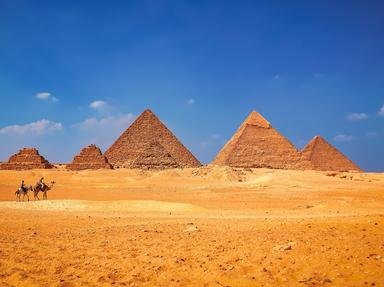Quiz Answer Key and Fun Facts
1. Those of you who study fashion may already know that high heels were invented in ancient Egypt! Do you know, however, which of the following listed professionals would normally wear them?
2. Which of the following was NOT one of the reasons the ancient Egyptians wore wigs?
3. The remains of an ancient door lock dating to at least 4,000 years ago were found in the remains of an ancient Egyptian palace. What is today's term for the type of lock that was found?
4. Perhaps the most well-rounded individual of the ancient world, Imhotep, used stone columns as early as 2600 BC in his architectural designs. What term is used to designate a hall whose roof is held up by columns?
5. One of the Seven Wonders of the Ancient World, the Lighthouse of Alexandria, is believed to have been the oldest lighthouse in the world. During which of the following eras in Egyptian history was the lighthouse constructed?
6. The predecessor of which of the following sports is believed by some to have been invented in ancient Egypt over five thousand years ago?
7. There is much debate among historians regarding which written language came first. While some say it was Egyptian hieroglyphics, others claim that it was cuneiform from Mesopotamia. In what way were the two forms of writing similar?
8. Egyptian dental problems have been well-documented, but did you know that the ancient Egyptians are credited with inventing the world's first toothpaste in approximately 5000 BC? Which of the following was one of the main ingredients?
9. The knowledge of medical and surgical procedures is believed to date back to as early as 3000 BC in ancient Egypt. Which of the following is considered to be the oldest medical text found in Egypt?
10. Which of the following inventions is attributed to the ancient Egyptians?
Source: Author
ponycargirl
This quiz was reviewed by FunTrivia editor
gtho4 before going online.
Any errors found in FunTrivia content are routinely corrected through our feedback system.

